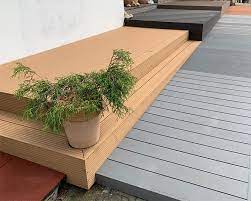The construction of a deck using a variety of decking board varieties is an inventive and efficient way to add value to the outdoor area. Through combining different materials you can achieve a unique look, improve the durability of your deck, and possibly save on expenses. This guide will show you how to build the perfect deck with different decking boards (terasová prkna) types.
1. Planning Your Design
Begin by determining the overall style and layout that you want to incorporate into your deck. Mixed decking types can add aesthetic appeal and practicality, but it is important to plan your deck carefully. Take into consideration how the different materials be used together, and what style you’d like to create. Draw a sketch of your deck and play around with various options of decking material, like wood, composite, and even plastic.
2. Choosing Decking Materials
Choose decking materials that compliment each with each other and will meet your specific requirements. The most popular choices are:
Composite Decking: Created from plastic and wood fibers Composite decking is long-lasting, low-maintenance, and is available in a variety of colours and textures. It’s impervious to rot and insect damage.
Pressure-Treated wood: Cost-effective and versatile, pressure treated wood gets treated by chemicals to resist rot and insects. The wood requires frequent maintenance in order to keep its appearance and durability.
Cedar or Redwood Natural woods are prized because of their aesthetics and durability to decay. They’re more costly, however they have a warm and rich appearance.
PVC Decking: Made completely of plastic PVC decking is extremely resistant to moisture and staining. It is ideal for coastal and humid areas.
3. Preparing the Site
Before starting construction, prepare your location by measuring and marking the area where the deck is to be built. Be sure that the surface is level and free of debris. Get the necessary permits and verify local building codes to be sure that your deck meets safety regulations.
4. Building the Frame
Construct the deck frame using pressure-treated lumber or steel. The frame should be sturdy enough to hold the weight of the mixed decking boards. Use joists and beams to create a stable frame, and make sure you have the right spacing between joists in order to support the various types of decking you’ll need.
5. Installing Decking Boards
Begin laying down your decking boards. If you are building a mixed-material deck it is possible to make patterns or sections with different materials. Utilize hidden fasteners or screws that are compatible with each decking style. Be mindful of the contraction and expansion properties of different materials and allow for adequate spacing between boards to accommodate the movement.
6. Finishing Touches
After putting in the decking boards, trim any overhangs and then add steps or railings depending on the need. Seal or stain wooden components to protect them from the elements. Regular maintenance will help to keep the deck looking great and performing effectively over time.
7. Maintenance and Care
Different decking materials require different amounts of care. PVC and composite decking typically require little maintenance, whereas wood decking will require periodic seals or staining. Make sure you regularly clean your deck and check for evidence of wear or damage.
A deck using various decking kinds allows for personalization and function, creating an appealing and long-lasting outdoor space. If you plan and execute it well your deck will be a stylish and long-lasting addition to your home.

No Responses